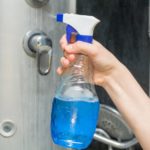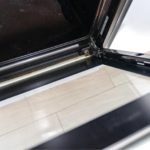Have you found yourself with some pesky tape residue on one of the glass surfaces of your house, such as your windows or mirrors?
Leaving tape for too long on a glass surface can make it incredibly difficult to get off again, and usually either bits of leftover tape or a sticky residue is left behind.
This tape residue is not easily removed and usually can’t be simply wiped away with a cloth and water. However, there are a few effective methods to properly eradicate this residue.
How to Remove Masking Tape from Glass Surfaces
There are four highly efficient methods for removing masking tape from glass. Which method is best depends on how long the tape has been there and how much has been left behind.
If you haven’t even attempted to pull the tape off yet, then start by gently removing as much of it as you can.
Use a dull knife, a razor blade, or a sharp-edged plastic card (anything that won’t scratch the glass) to remove any leftover bits of the actual tape.
Now you should be left with a sticky residue, the size and thickness of which will depend on how long the tape was stuck to the glass for.
1. Vinegar
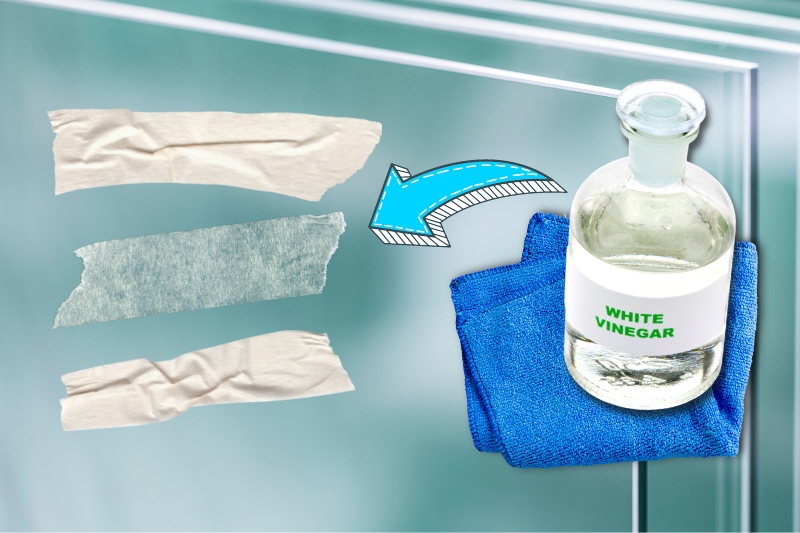
Vinegar is a very powerful cleaning agent in most situations and is an excellent product to use when tackling sticker residue. Most people already have it in their kitchen cabinets so it should be easy to grab when necessary.
Vinegar is most effective if the tape has been left on the glass for a long time. Pour equal amounts of water and vinegar onto a cloth until it is fully saturated and then press it to the sticky residue.
Leave it to soak into the residue for a few minutes and then use a clean, dry cloth to wipe away the residue. If there are any marks left, use some dish soap and warm water to wash them away.
2. WD-40
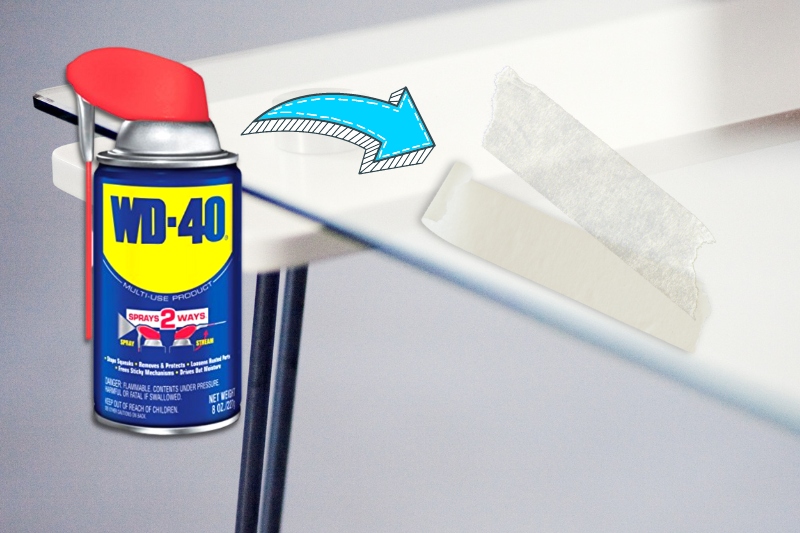
WD-40 has lots of uses in cleaning, and is both affordable and easily available. It usually comes with some kind of spray nozzle that makes it easy to use as well. Spray the product directly onto the glass and make sure to properly cover all areas where there is leftover tape.
Leave the WD-40 for five to ten minutes before using a clean cloth to wipe it away. Apply a good amount of pressure to the glass to ensure that all residue is removed. Just remember that you are dealing with glass, so not too much pressure!
3. Olive oil
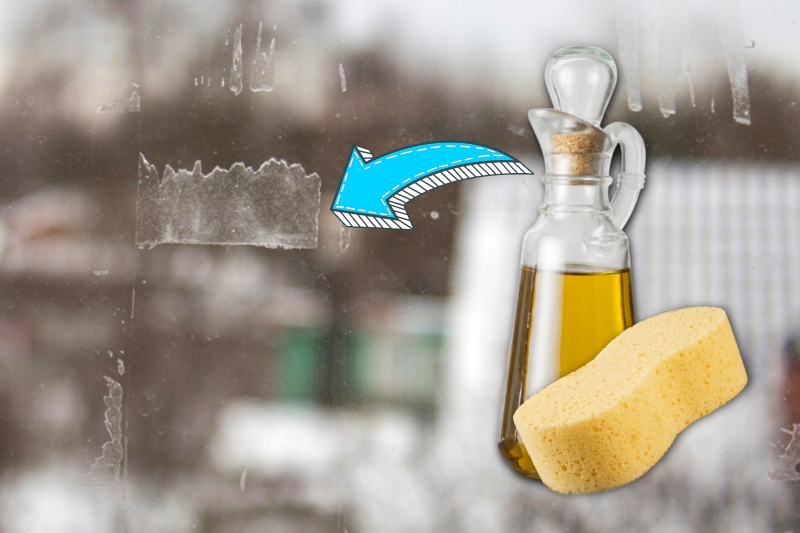
Olive oil and various other oils, including vegetable oils, are also a good tool when fighting sticky messes.
Simply pour a thin layer of olive oil onto the affected sticky area and keep it on the residue by holding a sponge over the tape.
Make sure the oil is properly infused into the tape and then leave it for five to 10 minutes to soak into the residue.
Once you’re sure the oil has fully penetrated the stickiness, you can scrub down the area with a gentle brush (that won’t scratch the glass), and then wipe it with a hot, soapy wet cloth until the residue is fully gone.
If you find yourself without any oils in the house, you can also try peanut butter on the residue as it has natural oils that will work wonders on the tape residue.
You can leave it on the stain for about 10 minutes and then wash it with soap and hot water, just as you would with the other oils.
4. Nail polish remover
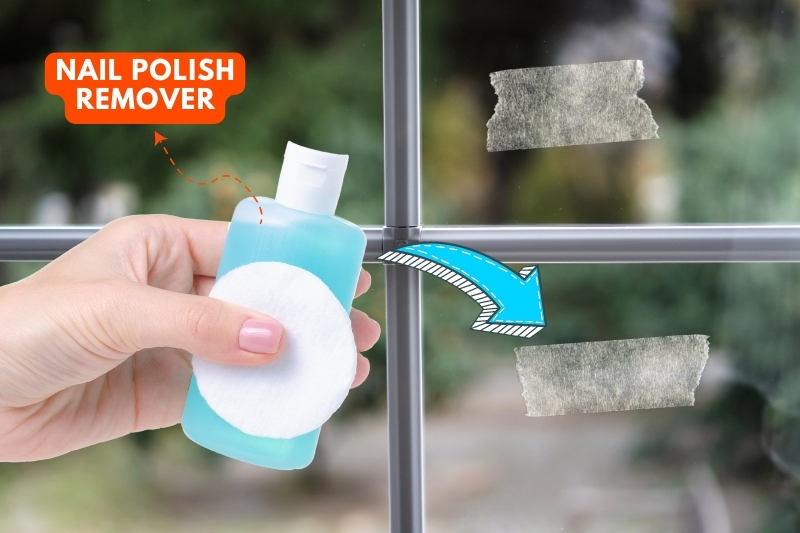
Nail polish remover is the last option that you can turn to. This is a good choice if you need to take action quickly but don’t have any of the other products from the list at hand.
The chemicals in the nail polish remover will work quickly to break down the stickiness in the tape that is stubbornly refusing to part with your glass.
Use a cloth to properly wipe the nail polish remover onto the residue and leave it to soak for a few minutes.
Once it is fully soaked in, use a clean cloth to wipe it away. If there’s still some residue remaining, use your knife, blade or plastic card to carefully scrape the rest away and then wipe the surface down with some warm water and dish soap.
Conclusion
One of these methods is sure to tackle that troublesome residue and leave you with clear, blemish-free glass!
Be careful never to allow any of these products to touch the surfaces around your sticky glass, especially any wood surfaces, as most of these could cause permanent damage to wood.
It is also always a good idea to test each potential method on a small portion of the glass in a less visible place before you tackle the full residue marks just in case there is an adverse reaction.

An adventurous book lover with an animal obsession and a proclivity for travel and spontaneity. Used to passionately despise cleaning but has grown to enjoy it thanks to learning all the best tricks and shortcuts to guaranteeing a stress-free routine and a spotless home.




